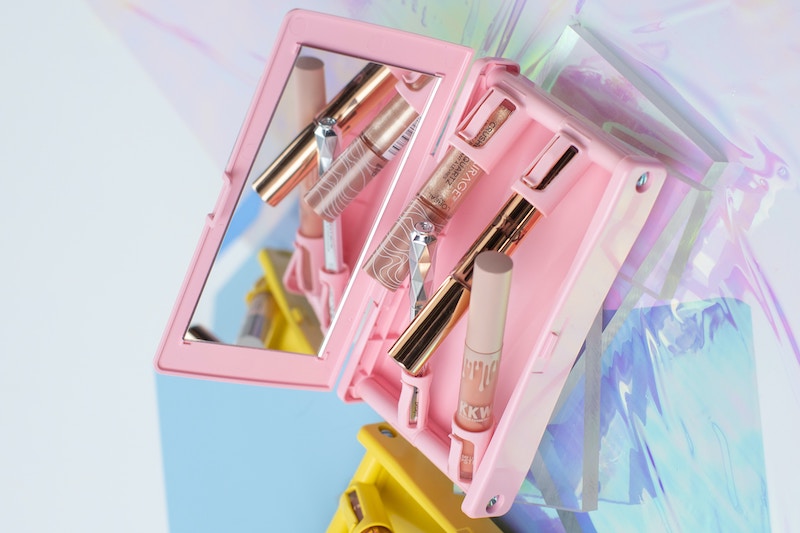French cosmetics juggernaut L’Oréal pounced on Aesop – Australia’s big skincare success story – in a record $4bn deal this year. Michael West tells the story of one man who took particular notice, and his fight to expose the use of toxic chemicals in beauty products.
John Costello, a New York advertising executive turned anti-chemicals activist, has long railed against L’Oréal’s use of micro-plastics and cancer-causing chemicals in make-up and hair care products.
“I’ve been blocked by at least 50 L’Oréal executives from the CEO on down,” says Costello, with a touch of pride. L’Oréal brand ambassadors Jane Fonda, Eva Longoria, Kate Winslet, Helen Mirren’s representation and management know me well, but they never respond. Even the newest, youngest influencers on Instagram and TikTok, like Emma Chamberlain, have recently signed huge endorsement deals with L’Oréal brands they are bringing the kids on, wearing (toxic) make-up.”
“I’ve contacted all their reps. Nobody responds ever. The money is too big.”
Corporate executives don’t tend to appear much on Twitter, so LinkedIn is John Costello’s domain. His own life has been ravaged by cancer. His family has been his motivation for battering away on people’s digital doorways to expose the use of dangerous chemicals in beauty products.
“We were a big Irish-Catholic family,” says Costello. My grandmother died at 54, my mother at 63, both of breast cancer. Three of my four sisters have had breast cancer.
“There are clean products. Wealthy women can afford to buy these but what about hair straightener, waterproof mascara? There is no doubt as to the links between parabens and cancer. When I began investigating this, contacting L’Oréal executives and influencers, I began to get blocked … many of the scientists are aligned [with industry] too.”
Because it’s worth it
Of the majestic profits, there is no doubt. Beauty products command fat profit margins, perhaps the fattest of any mature manufacturing sector in the world. The latest financials for the French company show operating profits rose by 21% to €7.5bn euros. Profits at a lavish 20% of sales is the envy of any corporation.
How do the executives from Clichy in Paris manage to deliver this sort of margin in a mature sector which has operated for over 100 years?
They spent €12bn euros on advertising and promotion, that’s how, almost one-third of their revenue last year alone. Forking out $4bn in cash for Aesop therefore is almost loose change for L’Oréal.
Why did they bother?
“Greenwashing,” says Costello. Founded by Melbourne hairdresser Dennis Paphitis in 1987, Aesop uses plant-based ingredients for its skin, hair and beauty products. Rather than chemicals.
And herein lies the rub. Natural products are more expensive to produce than those laced with chemicals. So it is that poorer women tend to be exposed to more toxic products: women in developing countries, poorer women in the US.
“Then there are the micro-plastics. [People] are inhaling them; they end up in the oceans.
Blocked again
[In early February], I asked a simple question of Deputy CEO Barbara Lavernos following L’Oréal‘s announcement on LinkedIn that they had signed on as a “Founding Partner” of #WorkingWithCancer.
“You see, The National Institutes of Health recently published a study that followed 33,947 racially and ethnically diverse women in the United States between the ages of 35 and 74 for eleven (11) years. During those eleven (11) years, a staggering 378 Black women were diagnosed with uterine cancer cases.
“Black women who reported frequent use of L’Oréal hair straightening products, were more than twice as likely to develop #uterine cancer to those who did not use L’Oréal products.”
“The Campaign for Safe Cosmetics found seven chemicals linked to #cancer in L’Oréal products including benzophenone-1; titanium dioxide; and four formaldehyde-releasing preservatives.
“In addition, the campaign also found four ingredients that are contaminated with the known cancer-causing chemicals #PFOA , #acrylamide and asbestiform fibres.
“These toxic chemicals are in L’Oréal shampoos, nail polishes, eyeliners, mascaras, eye shadows, facial toners, anti-aging products, blushes and powders.”
Maybelline Ooh La La
“Maybelline Cosmetics Great Lash mascara, one of L’Oréal‘s most iconic products, lists the chemical Quaternium-15 on the label. Quaternium-15 releases carcinogenic formaldehyde, which is used to preserve mascara.
“L’Oréal’s Kids 2-in-1 shampoo? It contains another formaldehyde-releasing chemical, DMDM hydantoin. Other companies have removed formaldehyde-releasing chemicals from children’s products. L’Oréal? They refuse.”
How do they get away with it? Health and safety regimes differ from country to country. Some regions, such as Europe, have better chemicals regulation than the US and therefore lower toxicity in their beauty products.
“Cosmetics and personal care products have not been regulated in the US since 1938,” says John Costello. The Personal Care Products Council is one of the biggest lobby groups in Washington (representing the likes of Proctor & Gamble and Unilever). They are literally killing people”.
“While the EU has banned or restricted 1,394 toxic chemicals, and Canada has banned 459, the US has only banned 11 … only those substances deemed filthy, putrid or decomposed … not even ‘forever chemicals’ like PFAS”.
There has been some speculation among Costello’s social media contacts that L’Oréal might seek to cut Aesop’s cost base by introducing chemicals into the products. There is no evidence for this. More likely, says Costello, is that they are greenwashing the whole operation, accentuating the positives.
How does Australian regulation fare compared with our global counterparts? Stay tuned.
Michael West established Michael West Media in 2016 to focus on journalism of high public interest, particularly the rising power of corporations over democracy. West was formerly a journalist and editor with Fairfax newspapers, a columnist for News Corp and even, once, a stockbroker.

